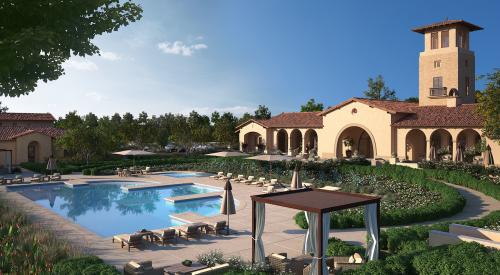| "We focus on the basics of the business - good land buys, sales velocities and efficient building operations." - Crossman Communities CEO John B. Scheumann
|
You don’t hear a lot about Indianapolis-based Giant Crossmann Communities, a public company that concentrates on entry-level and first move-up buyers in Indiana, Ohio, Kentucky, Tennessee, and the Carolinas. But over the past ten years, the firm has recorded compounded growth rates of over 30% in sales and over 50% in net income. Not many public builders specializing in the value-driven, low-end segments of the market boast net margins approaching 7%. Crossmann does.
Ask CEO John Scheumann the secrets to his success and he’ll tell you there aren’t any. "There are no silver bullets. We just keep our noses to the grindstone and stay focused on the basics of the business, good land buys, good sales velocities, efficient building operations. In a lot of ways, this is very much a manufacturing business."
However they do it, Crossmann is sneaking up the Giants rankings, from 29th last year to 24th this year, on 1999 revenues of $609.3 million from 5100 closings, most of them on single-family houses averaging $121,500. That compares to 3714 closings in 1998 for $421.9 million. Net income for 1999 was $39.7 million, up 33% from $29.9 million in 1998.
While most builders, especially publicly traded ones, found acquisitions very hard to do in 1999, Crossmann even managed one of those, an $11.8 million cash deal for a Raleigh builder, Homes By Huff & Co., which closed 145 houses in 1998 at an average price of $163,011.
"You can’t do acquisitions using stock as currency right now," says Scheumann, "with the depressed share prices we’re all getting. (Crossmann’s stock was trading at a multiple of 4-1/2 times earnings as PB went to press.) At today’s prices, nobody wants to buy anything. But some deals will get done for cash. Right now, most of the public builders are concentrating on buying back their own stock. NVR, Kaufman and Broad, and Ryland have all announced repurchase plans recently. Everybody’s working on it.
Will Crossmann try to do more greenfield start-ups in the coming year?
"We did a start-up in Nashville at the end of 1998 and sold 95 houses there last year. But the reality of our business today is that human capital is the resource in shortest supply, so greenfield start-ups may not make any more sense than acquisitions," says Scheumann.
However, this firm still has a strong upside, because it has so few mature markets. There’s plenty of room for growth in every market except the headquarters location in Indianapolis and southern Indiana, where Crossmann closed 2413 units in 1999. All of the other divisions range from 95 units (Nashville) to 386 (Myrtle Beach).
Toward that end, Scheumann is driving for more affordability into his product with innovations in land planning. "The number of plans we build has grown in the past few years because we keep building on smaller and smaller lots. A few years ago, everything we had was for 60- or 70-foot (frontage) lots. Today we have plans for 50-, 45-, even 40-foot lots," Scheumann says.
"Where we can build on 40-foot lots, we can get house prices starting in the low $80,000 range. That broadens our market a lot.
"You can’t get those small lots everywhere, because a lot of the municipalities don’t want the densities, and really don’t want affordable homes. But we see an opportunity to do more of it in modified Traditional Neighborhood Design communities. The acceptance of that type of planning seems to be better.
"Smaller lots really were more common back in the 1920s. It works for us because some of the cities are going to TND zoning. We’re designing a lot of rear-loaded product right now. I don’t know that we’ll see a requirement for TND. The increasing popularity may be market-driven rather than political. When you get into small lots, it really does make for a better street scene. People don’t like to see cars out front."
In the South, a lot of affordable housing is built without garages at all, says Scheumann. "If you’re going to just have a parking pad, it makes sense to put that in the back, to get the cars out of sight."
Scheumann believes the idea that a 15% premium must be attached to houses that are alley-loaded may be a myth. "Some cities give you a break on the street width in front when you put in an alley. Driveways are not as long, and neither are sewer and water runs. We’re still working on the costs."
Crossmann will push any concept that allows houses to be priced more affordably, since lower prices drive higher velocities. And inventory turns are a big part of his plan.
Also See Movers and Shakers:
Lennar Redefines Bigness
Spectrum Skanska Hits Highest Price Point
Regis Homes Ups Ante On Quality
Morrison Leads The Charge To TND
Newmark Has New Model For Growth In Roaring 2000s
Brookfield Has Steely Resolve
Estridge Pioneers "First Mile"
ALH: Private Acquisitor Rising












